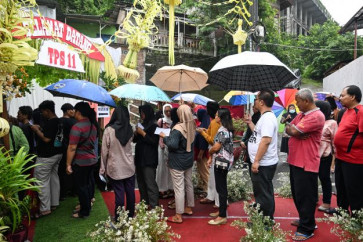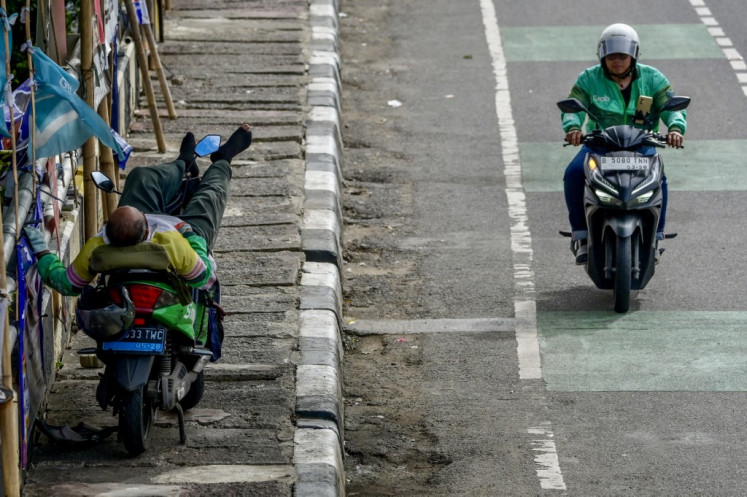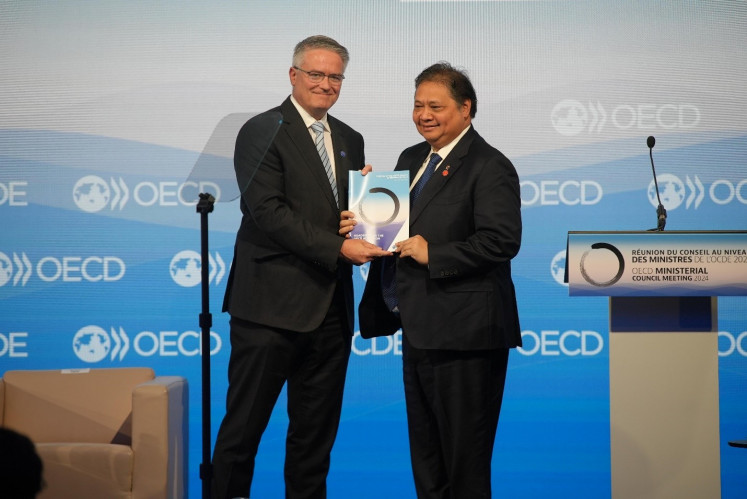Urban Chat: Archiving our vast cultural vault for the world to see
Weâre very bad at archiving our work â myself included
Change Size

W
e're very bad at archiving our work ' myself included.'
Senior fashion designer Didi Budiardjo told me that when I paid homage to his exhibition at the Textile Museum in Jakarta recently. Fashion designers overseas are accustomed to presenting well-curated exhibitions at plenty of great museums that have long welcomed fashion as an integral part of art, but sadly that's not the case here.
When Didi decided to showcase his 25-year body of work, he couldn't find a suitable art curator, let alone a fashion exhibition curator, so he had to turn to an art director. Yet for a pioneer fashion exhibition at a museum, prepared by a skeletal crew, Didi Budiardjo's 'Pilgrimage' pulled it off.
The installations are conceptual and featured within contexts that let his designs shine beyond the sum of their gorgeous parts. It's a delightful presentation for anyone, a must for textile enthusiasts and any fashionista worth her shoe collection. Initially planned for less than two weeks, the exhibition is extended until Feb. 1 due to warm public response.
But Didi was correct on how the Indonesian fashion community has been achingly poor at archiving its journey, despite rich and accessible archives being pivotal to teaching the next generation and preserving the industry's collective works for the world.
The aforementioned Textile Museum, just like most museums in Indonesia, features heritage riches that are neither attractively installed nor designed to induce much learning. Batik museums in the Central Java towns of Pekalongan, curated by textile expert Asmoro Damais, and Surakarta, managed by the Danar Hadi family, try their best ' but as much as I salute their efforts, I wonder if they're sustainable in the long run.
Digitized news and the social media accounts of designers, who've come onto Instagram by the hordes in recent years, help to increase awareness for Indonesian fashion and art students, but are far from the level of research capacity offered by affordable books, robust libraries, well-archived fashion houses and well-equipped museums that their student counterparts enjoy overseas.
It is a must to mention that some of the great books on fashion published overseas in recent years have gone beyond the clothes to analyze the growing business behind them, with stock price reviews, global expansion plans and boardroom dramas included.
It seems like a handful of market players have also recognized this gap and tried to fill it.
Textile expert Asmoro Damais has penned well-researched literature on traditional Indonesian fabrics; a few of the weaving communities, like Toraja Melo, have begun to record their quickly disappearing heritage; and some renowned batik makers and serious heritage fabric collectors have even put their collections in writing. Unfortunately these books are still in coffee table format that, however lovely, are pricey and limited.
In fashion, perhaps the best books by far are the ones published by the late Iwan Tirta. Didi Budiardjo attempted to archive these by holding an exhibition, while another senior designer, Biyan Wanaatmadja, launched a book around the same time. It is a highly stylized volume that opens well with an insightful interview of how young Biyan started his 30-year career by enrolling in a Dusseldorf school specializing in arguably fashion's most crucial skill, pattern making, and how his white peacock pets provide a serene start to each working day.
I only wish that he'd included designs further back than 2008 ' I would have happily loaned out some of his 1990s evening gowns from my closet if that had been a help, in fact.
After these baby steps, what's next? I'm dreaming of a centralized, massive archive of Indonesian fashion and heritage textiles from generations ago, complete with detailed inscriptions, high-res pictures and designer interviews that are accessible online for everyone. Will the availability of these enable cheating instead of ignite inspirations for lazy designers? Potentially. But since the archive would be an open source to everyone, then everyone will be able to catch the cheaters, too.
Beyond education and heritage preservation, it would make a great tool for cultural branding. The world has increasingly cast its tasteful glance at our heritage, marked this month by a Best National Costume win at the Miss Universe pageant, a Hermès tea set printed in our traditional hand-woven ikat and Marks & Spencer's limited edition blouse in Megamendung batik.
Despite complaints from some Indonesian fashion fans, Marks & Spencer had every right to label it 'Made in Turkey' because that was possibly where the apparel was physically produced, regardless of the material's country of origin (International Trade 101, sista).
If the richness of our heritage and contemporary creations are already known or easily accessible, even if global brands have to produce and label the garments elsewhere, the fashion world will be knowledgeable enough to know that the prints or techniques are derived from Indonesia's vast cultural vault, just as meander carving is instantly recognizable as Greek and the paisley pattern as Indian.
That is a much more effective and sustainable effort by the fashion community as a whole, instead of individually berating Marks & Spencer on their social media accounts and demanding they change the blouse's label.
There, my two cents. Thoughts, Indonesian fashion community? The newly formed Creative Economy Agency, what say you?
________________
Lynda Ibrahim is a Jakarta-based writer with a penchant for purple, pussycats and pop culture.









